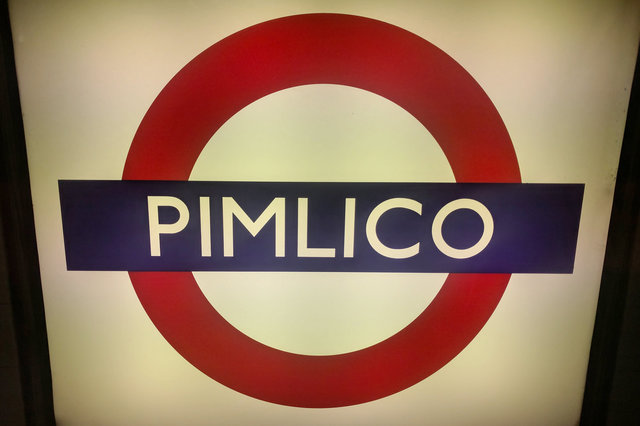London Calling
Started: 2016-10-30 14:20:39
Submitted: 2016-10-30 16:56:59
Visibility: World-readable
In which the intrepid narrator visits the Portsmouth Historic Dockyard and makes his way back to London
With one day left in Portsmouth before heading back to London to work (being the actual point of my trip to London), I set my alarm early enough to arrive at the Portsmouth Historic Dockyards when it opened at 10:00, in hopes of skipping the massive queue I found at the entrance the day before. Jetlag woke me up early in the morning and wouldn't let me get back to sleep for an hour or two. Once my alarm went off and I headed out into the world I tried to stand strategically in the sun to try to convince my body clock that it really was morning and I really ought to be up and about, not sleeping.
I checked out of my hotel and left my luggage at the front desk while I headed to the dockyards, by way of Caffe Nero for potable coffee. I caught the 10:15 water bus across the harbour to the Royal Submarine Museum in Gosport, at the former site of the Royal Navy submarine base HMS Dolphin. The sky was clear and the seas were calm for the short journey across the harbour.
The main attraction at the Royal Submarine Museum was a guided tour of HMS Alliance, a diesel-powered submarine built at the end of WWII, intended for use in the Pacific Ocean. A retired submariner* met the tour group (comprised mostly of people who'd caught the same water bus I did) at the stairs leading up to the hole cut in the side of the submarine and took us into the forward torpedo room. Walking down the cramped corridors of the boat I struggled to imagine how crowded it would be in commission, with men bunked everywhere trying to keep their systems operating. I liked seeing the technology in the control room, especially the plotting machine using dead reckoning to try to estimate where the boat was.
[* Everyone pronounced it "sub-mariner"; I'd assumed it would be pronounced by adding an "er" at the end of "submarine".]
The museum had a number of other interesting boats, including Holland 1, the first submarine in the Royal Navy, which entered into experimental service in 1901. (The adjacent interpretive text mentioned briefly that the Americans were leading the way on submarines at the turn of the last century.) After proving the concept of submarines in the Royal Navy, the boat quickly became obsolete and was being towed for scrap when it sank in 1913. It was recovered in 1982 and put on display, but the conservation efforts proved to be inadequate. Holland 1 was eventually reopened in a new building dedicated by Countess Mountbatten of Burma in 2001.
The other interesting boat was the midget submarine X24, built by the British during the Second World War to attack German ports, being small enough to slip through the anti-submarine defenses.
I looked through the galleries and the gift shop before catching the water bus back to Portsmouth for lunch at the museum cafe.
I looked through the Trafalgar gallery and the Royal Navy Museum (where I saw a Chinese bell taken as spoils of the Opium War), then decided I'd seen enough Royal Navy for one weekend and it was time to head back to London.
I picked up my suitcase at my hotel, then headed back to the train station to catch the next train to London. I successfully completed my first-ever chip-and-pin transaction buying a train ticket at an unattended kiosk (a use-case that most US banks don't believe exists), then boarded the next train for the two-hour ride to Waterloo Station.
Once I arrived in London I still had to get to my hotel. At the recommendation of one of my coworkers, I decided to stay at Dolphin House, an extended-stay hotel in the London neighborhood of Pimlico at Dolphin Square, a block of flats spanning an entire city block surrounding a large courtyard. I took the Tube to Pimlico station, then walked a few blocks to check into my hotel. I walked to dinner at a nearby Thai restaurant (completing another chip-and-pin transaction, this time on my corporate credit card, which works like European credit cards being pin-preferred, even at point-of-sale terminals run by humans), then organized my bags to go to work the next day.







